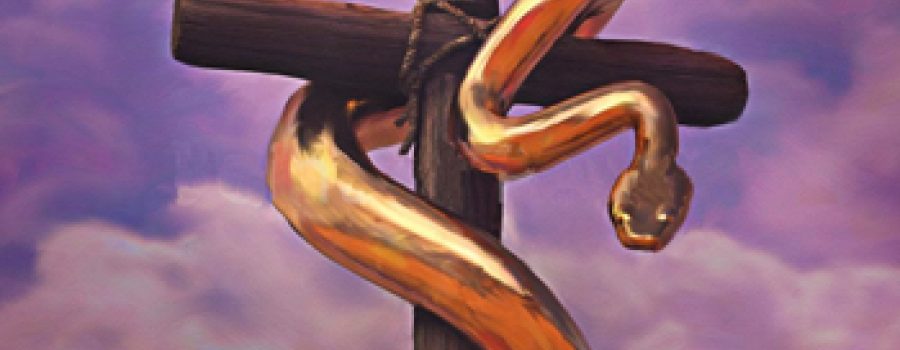One of the many ways that Messiah was revealed to Israel in the Torah was through the brazen serpent lifted up in the wilderness. We read in the Torah:
6. And YHWH sent fiery serpents among the people, and they bit the people; and much people of Israel died.
(Numbers 21:6-9)
7. Therefore the people came to Moshe, and said, We have sinned, for we have spoken against YHWH, and against thee; pray unto YHWH, that he take away the serpents from us. And Moshe prayed for the people.
8. And YHWH said unto Moshe, Make you a fiery serpent, and set it upon a pole: and it shall come to pass, that every one that is bitten, when he looks upon it, shall live.
9. And Moshe made a serpent of brass, and put it upon a pole, and it came to pass, that if a serpent had bitten any man, when he beheld the serpent of brass, he lived.
In the Stick of Joseph, Alma ben Alma elucidated this incident saying:
Behold, he [Messiah] was spoken of by Moshe; yes, and behold, a type was raised up in the wilderness, that whosoever would look upon it might live. And many did look and live.
(Alma 16:32)
And many years later, Nefi ben Cheleman taught:
But behold, you not only deny my words, but you also deny all the words which have been spoken by our fathers, and also the words which were spoken by this man, Moshe, who had such great power given unto him — yes, the words which he has spoken concerning the coming of the Mashiach. Yes, did he not bear record that the Son of Elohim should come? And as he lifted up the brazen serpent in the wilderness, even so shall he be lifted up who should come. And as many as should look upon that serpent should live, even so as many as should look upon the Son of Elohim with faith, having a contrite spirit, might live, even unto that life which is eternal.
(Cheleman 3:9)
How did these ancient American prophets know that the brazen serpent represented the Messiah? They were well aware that the gematria (numerical value) of the Hebrew word for “serpent” (נחש) is 358 and that this is also the gematria of the word “Messiah” (משיח). Moreover, 358 is also the gematria for the phrase “Shiloh comes” in Gen. 49:10 (יבא שילה) and this is why the Talmud says that “Shiloh” is one of the names of Messiah (b.San. 98b) and also the reason that the Targums paraphrase the word “Shiloh” as “Messiah” in in Gen. 49:10.
In making this application, the Stick of Joseph prophets Alma ben Alma and Nefi ben Cheleman echo the teaching found in the Apocrypha in the Wisdom of Solomon, where we also read that the brazen serpent was “a sign of salvation” (the Hebrew name “Yeshua” means “salvation):
5. For when the horrible fierceness of beasts came upon these, and they perished with the stings of crooked serpents, your wrath endured not for ever:
(Wisdom of Solomon 16:5-7)
6. But they were troubled for a small season, that they might be admonished, having a sign of salvation, to put them in remembrance of the commandment of your Torah.
7. For he that turned himself toward it was not saved by the thing that he saw, but by you, that are the Savior of all.
These words confirm the words of Yeshua himself in the Good news according to Yochanan:
13. And no man hath ascended up to heaven, but he that came down from heaven, even the Son of man which is in heaven.
(Yochanan 3:13-15 see also 8:28 and 12:32)
14. And as Moses lifted up the serpent in the wilderness, even so must the Son of man be lifted up:
15. That whosoever believeth in him should not perish, but have eternal life.
The Stick of Joseph gives us a profound Jewish understanding of the brazen serpent as a type or symbol of Messiah, once again testifying to the fact that the Stick of Joseph is, after all, an ancient Jewish testimony to the Torah and the Messiah.



Leave a Reply